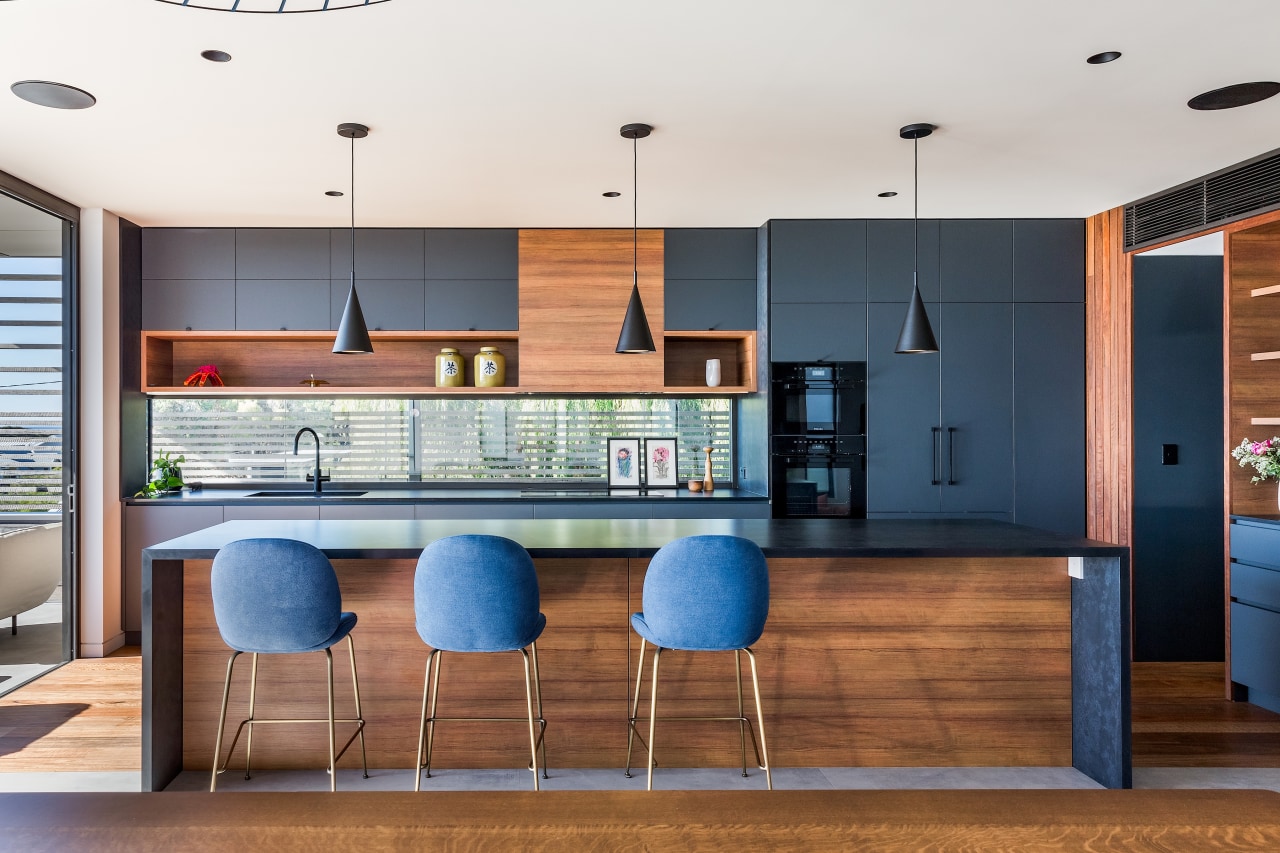6 tips to consider for your kitchen lighting
Whether it's a new kitchen, a renovation, or even just a modest-outlay changeup, lighting is an integral part of your kitchen design – here's what to consider
1. Task Lighting
Task lighting is crucial in the kitchen as it provides focused illumination for specific work areas.
Consider the primary tasks performed in your kitchen, such as cooking, food preparation, and cleaning.
Install task lighting fixtures, such as under-cabinet lights or pendant lights, to provide ample brightness and eliminate shadows on countertops and work surfaces.
2. Ambient lighting
Ambient lighting creates overall illumination and sets the mood in the kitchen.
It ensures a pleasant and inviting atmosphere while providing general illumination throughout the space.
Recessed ceiling lights or track lighting can be used to achieve ambient lighting.
You can also increase the ambient effect by installing strip lighting along toekicks or under countertop overhangs.
Dimmers are also a great addition to control the intensity of ambient lighting, allowing you to adjust it according to different needs and occasions.
3. Accent lighting
Accent lighting adds depth, visual interest, and highlights specific areas or architectural features in the kitchen.
It can be used to showcase artwork, decorative backsplashes, or display shelves.
Consider installing adjustable recessed or track lighting fixtures to create a focal point or draw attention to particular elements in the kitchen.
4. Colour temperature
Pay attention to the colour temperature of your lighting fixtures.
Colour temperature is measured in Kelvin (K) and affects the perceived warmth or coolness of the light.
For kitchen lighting, it's generally recommended to use bulbs in the 3000K to 4500K range for both fashion or function.
Warmer temperatures (2700K-3000K) create a cosy and intimate ambience, while cooler temperatures (3500K-4500K) provide a brighter and more energetic feel.
5. Lighting layers and controls
Incorporate multiple lighting layers and controls to create a versatile and adaptable lighting design.
By combining different types of lighting (task, ambient, and accent) at varying levels, you can achieve a balanced and functional kitchen lighting scheme.
Additionally, consider using separate switches or dimmers for different lighting zones to customise the lighting levels according to specific activities and mood requirements.
6. Feature lights
Extend your kitchen's overall design statement by incorporating feature light fittings.
These could be the fittings above your island – provided they create a good level of brightness for the work surface.
Or feature lighting above the table in an adjacent dining area may complement your kitchen design.
Remember, every kitchen is unique, and your lighting design should be tailored to your specific needs and preferences. Taking these factors into account will help you create a well-lit, comfortable, and visually appealing kitchen space.
Story by: Trendsideas
Home kitchen bathroom commercial design







